This is a drawing showing another form of motions in a planets interior.
Click on image for full size
Motions in Neptune's Interior, part 2
Motions in the interior of a gas-giant planet such as Neptune may be very different from the motions within the Earth.
A second idea for the motions in the interior of a gas-giant planet is shown in this picture. Strong heat coming from within a planet can cause this kind of motion to take place.
The drawing shows that underneath the clouds of Neptune, long logs of material may be in motion, rolling in different directions. It is thought that this pattern may be in operation because the tips of the logs may match up with the striped pattern of clouds seen in the atmosphere.
It is not known which of these two kinds of motion, one typical of the earth, and one like this, takes place in the interior of Uranus.
You might also be interested in:
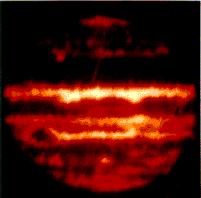
The picture shows places on Jupiter which are hot. Jupiter is a very warm body in space, as shown in the picture, and this warmth is associated with the energy of Jupiter. Neptune has also been found to
...more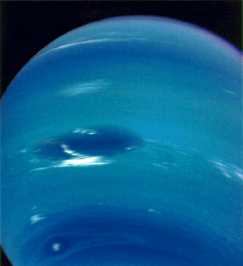
Like Jupiter and all the giant planets, Neptune's appearance shows a striped pattern of clouds. Other cloud shapes seen over time include a small dark spot, the "scooter" and the Great Dark Spot. The Great
...more
Motions in the interior of a planet help carry heat from the inside to the outside. The drawing to the left illustrates a kind of global motion that is typical of motions in the atmosphere as well as interior
...more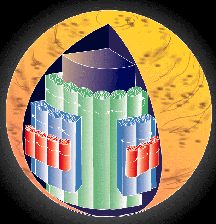
Motions in the interior of a gas-giant planet such as Neptune may be very different from the motions within the Earth. A second idea for the motions in the interior of a gas-giant planet is shown in this
...more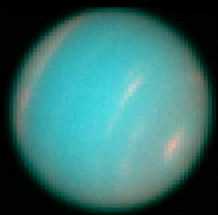
This image shows the new Great Dark Spot of Neptune, which was discovered using the Hubble Space Telescope. The image shown here, shows a "hole" in the clouds of Neptune in pink, in the northern hemisphere,
...more
The giant planets have definitely changed since their formation. But how much remains to be seen. Most of the original air of the giant planets remains in place. (The earth-like planets lost most of their
...more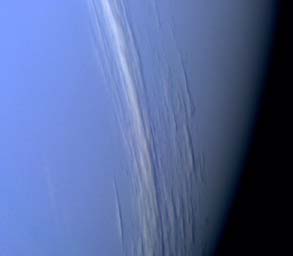
This image shows some clouds known as "cirrus" clouds, extending for many kilometers across the face of Neptune. These clouds are very high up, for they can be seen to cast shadows on the lower clouds,
...more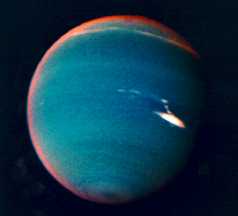
This image of Neptune uses false colors to show where the smog is. The smog of Neptune can be seen in red along the edge of the image. These hazes of smog are found at very high altitudes, over the clouds
...more













